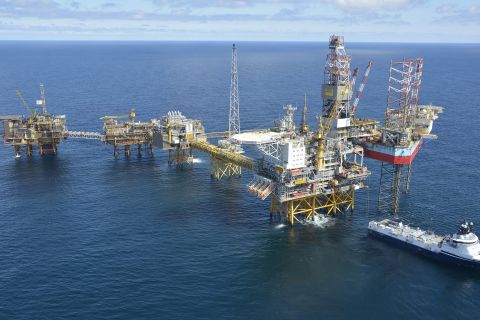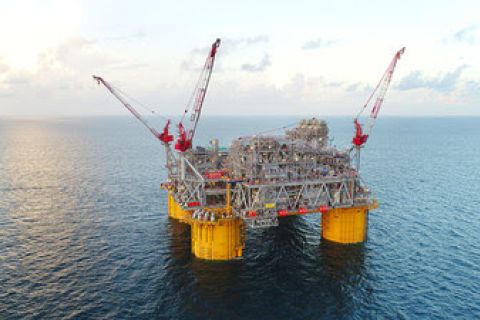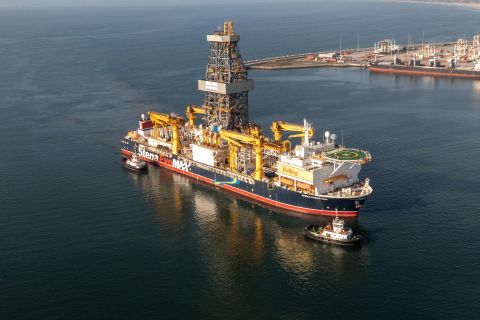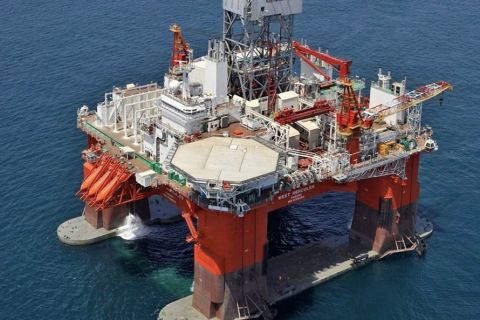
Above photos: protests against construction of the Dakota Access Pipeline. Below: sign outside the Standing Rock reservation in North Dakota and the Oceti Sakowin camp where protestors were based. (Source: Shutterstock)
Editor’s note: Opinions expressed by the author are his own.
How does an energy giant with 8,500 employees and market cap of more than $39 billion manage to get its reputation shredded in the public arena by an angry horde of slobs who allegedly couldn’t pick up after themselves, apparently delighted in vandalism, engaged in physical attacks and abandoned a litter of puppies?
The answer is not as simple as the oil and gas industry would like it to be. The Dakota Access Pipeline (DAPL) tale is not simply a parable about the evils of social media. Energy Transfer LP (NYSE: ET) was the target as builder and lead partner of the project, but next time it might be a different company—or Energy Transfer again—and another public beating could be in store.
See, the oil and gas industry is not popular among the general public. That is, the vast majority of folks who are not part of the industry but not part of the keep-the-fossil-fuels-in-the-ground community, either. They use the industry’s products but perceive it as a potential threat to clean air and water, and a lot of them vote. They can be swayed, but not by the clumsy way DAPL was handled.
“As an industry, we need to know what we’re facing,” Matt Ramsey, Energy Transfer’s president and COO, warned industry executives on Feb. 13 at NAPE’s business conference in Houston. Ramsey has a JD and is a veteran of the oil and gas wars, but despite his smarts and experiencewas blindsided by the ferocity of the battle he found himself in.

We all know the DAPL story from the 2016 spirit camp debacle: tribal water rights, massive protests, celebrity drop-ins, government intervention, more government intervention, lots of stuff in courts, permits approved, construction completed, oil flows through pipeline, America moves on to the next crisis (OMG, “Moonlight” beat “La La Land”? Whaaaaaat?!?!?!) But let’s break down what went wrong and why this fight isn’t over.
First of all, that’s what it is, a fight, so treat it like one. Let’s see how well Energy Transfer utilized the four-step mnemonic for sparring: eyes bright, keep low, hands fast, feet slow.
Eyes bright. Maybe situational awareness is a better term. Energy Transfer contacted the Standing Rock Sioux in September 2014, more than a month before submitting original application documents to the U.S. Corps of Engineers. At the meeting, Ramsey said, the tribe made it clear that it opposed the pipe, that the consultation process itself was “meaningless” and then rebuffed efforts by the company and the Corps to discuss it over the next 22 months.
So Energy Transfer follows the letter of the law, Standing Rock fails to respond to communication, i.e., does not object, so no problem, right? Obviously not. From the company’s point of view, it was ahead of the curve. From the tribe’s viewpoint, Energy Transfer was way behind. In 2012, according to former tribe Chairman Dave Archambault II, Standing Rock issued a declaration making clear its opposition to pipelines and hydraulic fracturing on its lands. Stopping by with a fruit basket and a “hey, FYI, we’re building a pipeline here,” didn’t change many opinions.
What is critical is that the company insisted that the tribe owned no land across the 1,172-mile route of the pipeline. That was accurate in 2016 property parlance, but Standing Rock disagreed, citing treaties with the U.S. government dating back to the Treaty of Fort Laramie in 1851.
Ignore advice of counsel for a moment and forget about who may or may not be right. One of the issues that caused this issue to blow up was that the company, like the U.S. government before it, did not sufficiently respect the tribe’s perspective and historical concerns, at least from the Standing Rock Sioux point of view. Energy Transfer was following the rules, sure, but it was still heading toward trouble.
Keep low. By diminishing your profile, you give your opponent a smaller target to hit. Energy Transfer went in the opposite direction and embraced the Army Corps of Engineers’ finding that the pipeline’s path under Lake Oahe posed no significant environmental impact. But Lake Oahe is not a natural lake; it is a man-made reservoir built by, you guessed it, the Corps. When the Corps built the Oahe Dam from 1948 through 1962 and created the lake, the tribe lost 90% of its timberland. The Corps confiscated land and the tribe had to go to court to obtain compensation. Needless to say, the Standing Rock Sioux have trust issues with the Corps of Engineers and any environmental study it may produce.
It’s unfair to blame today’s Energy Transfer executives or members of the Corps for what happened in the recent or distant past. But it is fair to hold them responsible for disregarding old grievances that are deeply felt by Native Americans, and that is exactly what they did.
“Under treaty rights, the land belongs to the natives,” Ramsey admitted. “But doesn’t that fly in the face of more than two years of work done by the U.S. Army Corps of Engineers, performed under the law of the land today?”
No. Not from the point of view of the Standing Rock Sioux.
Hands fast. To say that Energy Transfer execs didn’t know what hit them is an understatement. As environmental activists pounded the company with a barrage of posts akin to a Sugar Ray Leonard flurry, the bewildered energy powerhouse remained stoic, ignored social media and, therefore, appeared helpless to respond.
“All the false information put out by the opposition piled up and we got further and further behind in the PR battle,” Ramsey said. “With no accountability whatsoever, anyone can post anything on the Internet that can be completely false.”
Ya think?
Feet slow. That doesn’t mean react tentatively; it refers to a deliberate pattern in which you move into position to hit back hard. Energy Transfer, unable to respond effectively in a social media skirmish, held out until President Donald Trump signed a memorandum four days into his administration that directed the DAPL process to proceed. Soon after, the fight was over; Energy Transfer had won. Shake hands and walk away, right? No, the company decided that now was a good time to throw a haymaker.
Energy Transfer sued Greenpeace and two other defendants, alleging a racketeering scheme to cause financial harm to the company and physical harm to employees and property. The suit might have warmed the cockles of C-suite hearts, but it was doomed to not end well. Greenpeace? Seriously? You and whose Japanese whaling fleet?
“We are totally committed to seeing this lawsuit through,” Ramsey promised at NAPE, two days before a federal judge dismissed the $1 billion suit, citing a lack of evidence that Greenpeace was running a coordinated criminal enterprise.
“Donating to people whose cause you support does not create a RICO [Racketeering Influenced and Corrupt Organizations” Act] enterprise,” wrote Judge Billy Roy Wilson in his Feb. 15 ruling. Neither does “posting articles written by people with similar beliefs.”
But here’s the kicker for those who just don’t get the social media thing: “Acting in a manner similar to others, without any sort of agreement or understanding, does not make you part of a RICO enterprise.” Whew. Every middle school kid in America can now relax.
Many in that room at NAPE would argue that the ruling was unfair because the activists were engaged in falsehoods, but c’mon, it’s social media. And in this ugly chapter, nobody appeared in the mood to seriously understand anybody else’s perspective beyond what was legally required.
So the optics of this lawsuit extend beyond the hubris of a company seeking to stomp on an opponent after already winning the fight. Because as long as environmental activists continue to do their thing (they will) and the oil and gas industry continues to build pipelines to move hydrocarbons out of the plays (count on it), the fight will go on.
What can the industry take away from this episode? Ramsey advised companies to create a social media strategy.
That’s sound advice. The industry needs to find an effective way to negotiate this very different cultural environment and constantly changing social media landscape. Just not Energy Transfer’s way.
What do you think? We want to hear your opinion. You can email us at editorial@hartenergy.com or tweet the author at @JHMarkman
Recommended Reading
Galp Seeks to Sell Stake in Namibia Oilfield After Discovery, Sources Say
2024-04-22 - Portuguese oil company Galp Energia has launched the sale of half of its stake in an exploration block offshore Namibia.
Green Light for ConocoPhillips’ Eldfisk Nord
2024-02-28 - ConocoPhillips is expected to begin production at its Eldfisk Nord project before the first quarter ends.
Shell Brings Deepwater Rydberg Subsea Tieback Onstream
2024-02-23 - The two-well Gulf of Mexico development will send 16,000 boe/d at peak rates to the Appomattox production semisubmersible.
Stena Evolution Upgrade Planned for Sparta Ops
2024-03-27 - The seventh-gen drillship will be upgraded with a 20,000-psi equipment package starting in 2026.
Orange Basin Serves Up More Light Oil
2024-03-15 - Galp’s Mopane-2X exploration well offshore Namibia found a significant column of hydrocarbons, and the operator is assessing commerciality of the discovery.





